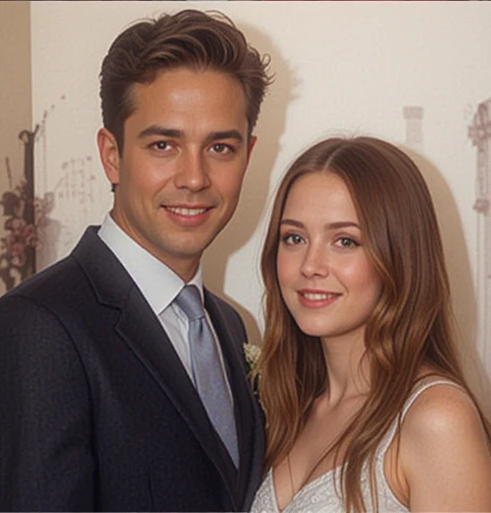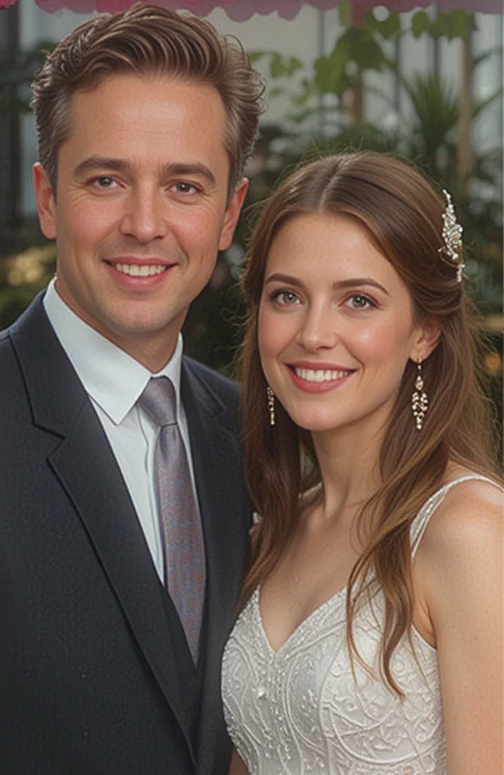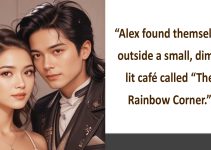



In the heart of the bustling city, amidst the glow of neon lights and the ceaseless hum of traffic, Rachel sat alone in her apartment, scrolling through her phone. She had just finished her third glass of wine, a sort of ritual she had developed for herself after another uneventful Friday night. Tinder was open, a sea of faces gliding past her thumb. Left, right, left, right. It was all the same. Despite the endless options, nothing seemed to stick.
Rachel had been on the app for nearly two years, and in that time, she had met a handful of guys, but nothing ever seemed to last. She’d gone on dates with men who were charming, funny, and good-looking on paper, yet there was always something missing. Chemistry. That elusive spark that made her heart race. Instead, each date felt more like a job interview than an opportunity for love. Maybe the problem wasn’t them; maybe it was her. Maybe she was too picky, or maybe she was too focused on the fantasy of an ideal relationship, something that technology just couldn’t deliver.
Her phone buzzed, pulling her from her thoughts. A new match. Instantly, she swiped up to reveal his profile—a tall man with a well-groomed beard and an impressive list of hobbies that included hiking, photography, and cooking. A potential match, perhaps?
She hesitated before typing a message. “Hey, nice to meet you. What’s your favorite hiking trail?”
As she hit send, Rachel couldn’t help but think about the irony of it all. She was sitting in her apartment, with a glass of wine in hand, typing to a man she’d never met and probably never would meet. Technology had become the bridge to her love life, yet it seemed to also be the barrier. She longed for real connections, for those moments where time slowed down, where everything felt right in the presence of someone else. But how could she find that in a world of swipe culture and fleeting interactions?
The New Normal of Love
Rachel’s story wasn’t unique. All around the world, people were navigating the complex terrain of modern dating—an arena where technology plays a pivotal role in shaping how we meet, connect, and ultimately fall in love. The introduction of dating apps like Tinder, Bumble, and Hinge has undoubtedly reshaped the dating landscape. Yet, this new world of convenience and speed has also led to unforeseen dilemmas that have left many wondering: Are we really closer to finding love, or have we simply made it harder to keep?
Online dating, once a niche activity for the shy or introverted, has become a mainstream way of finding romantic connections. The promise of a perfect match, curated by sophisticated algorithms, is appealing. No longer do you need to spend hours at bars or social gatherings, hoping to make a meaningful connection with someone. Instead, with a few swipes, you can be matched with dozens, if not hundreds, of potential partners.
But with this ease comes a paradox. The more people we can connect with, the harder it seems to find someone who feels right. The process of choosing, swiping, and matching has become a game—a fast-paced, dopamine-driven chase for validation. The problem with this approach is that it’s transactional. Swiping left or right feels more like a decision about pizza toppings than about human connection. And even when you do match with someone, the pressure to keep the conversation engaging and interesting can often feel exhausting.
For Rachel, it wasn’t just the endless swiping that frustrated her—it was the pressure to be perfect. Dating apps encouraged users to craft their best selves, uploading pictures that showcased their happiest moments, writing bios that were witty and fun. Yet, underneath all of that curation, Rachel began to wonder: What about the real, raw moments that come with being vulnerable with someone? Was there space for imperfection in this digital world of love?
The Ghosting Epidemic
One of the most troubling phenomena of modern dating is the rise of “ghosting.” Ghosting occurs when someone suddenly and without explanation cuts off all communication with a person they were previously engaging with. It’s become a frustrating, almost expected, part of the online dating experience. Rachel had been ghosted more times than she cared to admit. Each time, it stung a little more.
It wasn’t just that people disappeared from her messages; it was the lack of closure, the ambiguity of it all. She had gone on a few dates with a guy named Tom who seemed perfect—charming, attentive, and interested. They had talked about their shared love for art galleries, their favorite bands, and even their childhood memories. It was one of the most engaging first dates she had had in a while.
But then, a few days after their date, Tom stopped responding to her texts. No explanation, no “Hey, I’m not feeling it,” just silence. This wasn’t an isolated incident; it had happened before, and she knew it would likely happen again.
Ghosting, experts argue, has become more prevalent in the age of online dating because the anonymity provided by technology makes it easier for people to disengage without facing the consequences of their actions. Unlike traditional dating, where there might be awkwardness or a difficult conversation, online dating provides an easy escape. It’s the ultimate form of emotional detachment—one that doesn’t require accountability.
For Rachel, the constant ghosting left her feeling disillusioned with the entire process. She couldn’t help but wonder whether technology had stripped away the humanity from dating. In a world where swiping is easier than having a difficult conversation, where messages are short and sweet, how could anyone expect a lasting connection to form?
The Algorithmic Love Story
Amidst the chaos of ghosting, swiping, and fleeting interactions, Rachel found herself thinking about the algorithms that were supposed to help her find love. These apps promised to match her with people who were compatible based on shared interests, values, and even personality traits. But despite this science-backed matchmaking, Rachel felt more disconnected than ever.
Algorithms work by analyzing data—your profile, your activity on the app, your preferences, and even your past matches. With this information, they try to predict who might be a good fit for you. Yet, as Rachel had discovered time and again, algorithms don’t account for the intangible elements of human connection. They can match you with someone who likes the same music or shares similar views on politics, but they can’t match you with someone who makes your heart beat faster when they walk into a room.
The idea of “compatibility” based solely on data felt limiting. Rachel wanted to believe that there was more to a relationship than a few shared interests. She wanted the butterflies, the spontaneous adventures, the moments that couldn’t be predicted by an algorithm. But, in the world of online dating, these things often seemed like afterthoughts.
Finding Love Beyond the Screen
Despite the challenges that technology posed to Rachel’s love life, she didn’t give up hope. She knew that love was still possible, even in a world dominated by screens. She had met people in the past who had shown her that real connections could be made, even in the digital age. But she had also realized that finding love wasn’t something that could be rushed or reduced to a formula. It was something that needed time, patience, and vulnerability.
Rachel made a decision that night. She would take a break from the apps, from the constant swiping and messaging. She would spend more time reconnecting with herself and with the people who truly mattered to her. She’d start dating in the real world again, where people weren’t just pixels on a screen. She’d embrace imperfections, spontaneity, and even the awkward moments that came with getting to know someone face-to-face.
A few weeks later, Rachel met someone—no apps involved. They were introduced through a mutual friend at a dinner party, and unlike her online experiences, the conversation flowed effortlessly. There was no pressure, no pretense. Just two people who connected over shared stories, laughter, and a love for vintage books. It wasn’t love at first sight, but it was a start. And for Rachel, that was enough.
Technology had changed the way people dated, but it didn’t have to define the way they loved. The search for genuine connection, for something real and meaningful, would always be worth the effort—whether it began with a swipe or a simple conversation over dinner.
And with that, Rachel put down her phone for the night, letting the glow of the city lights fade into the background as she smiled to herself. Love wasn’t something that could be found in an app—it was something that would find her, when the time was right.



